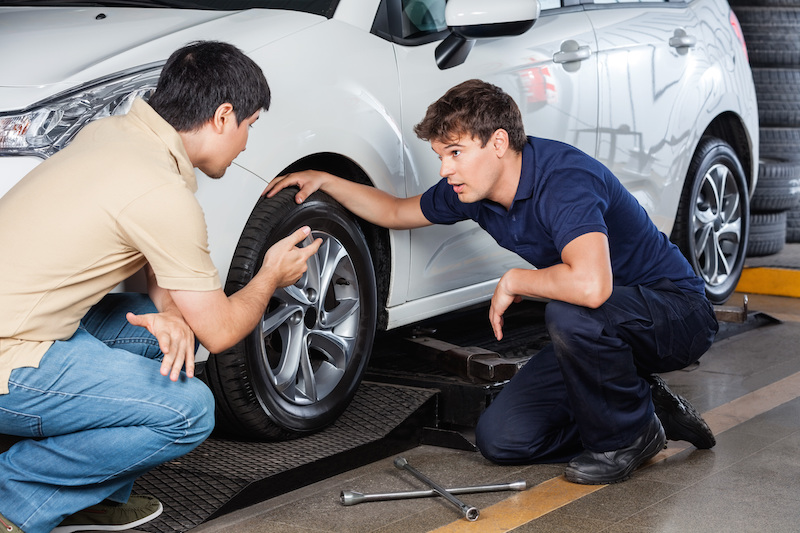Tire rotation is an essential maintenance task that ensures even tire wear and longer life. Doing it yourself can save you money and give you a better understanding of your vehicle. This DIY guide gives you a comprehensive step-by-step method to change your tires at home safely and effectively.
Learn more about changing tires
Tire rotation involves moving the tires from one location on the vehicle to another. This ensures that all tires wear evenly, improving their performance and lifespan.
Why change tires?
Even wear: Different locations on your car cause your tires to wear differently. Turning them ensures even wear.
Extend Tire Life: Regular rotations extend the life of your tires, saving you money.
IMPROVED PERFORMANCE: Evenly worn tires provide better handling and traction.
Safety: Proper tire maintenance improves vehicle safety.
How often should you replace your tires?
Most manufacturers recommend rotating tires every 5,000 to 13,000 kilometers. Consult your vehicle’s owner’s manual for specific recommendations.
Required tools and equipment
Before you begin, prepare the following tools and equipment:
jack
jack stand
Tire wrench
Torque wrench
Chalk or marker
wheel chock
User manual
Step-by-step guide to changing tires
Follow these detailed steps to change your tires at home.
Step 1: Find a safe location
Park the vehicle on a flat, stable surface. Apply the handbrake and place wheel chocks behind the tires to prevent rolling away.
Step 2: Loosen the wheel chock nuts
Using a wheel chock wrench, loosen the wheel chock nuts on all four tires slightly. Don’t remove them completely; just break through the initial resistance.
Step 3: Lift the vehicle
Consult your vehicle’s owner’s manual for the correct jacking point. Use a jack to lift one corner of the vehicle at a time. For safety, place jack stands under the car before moving to the next corner.
Step 4: Remove the tire
Once the vehicle is firmly supported by the jack, remove the nuts and remove the tire.
Step 5: Mark the tires
Use chalk or a marker to label each tire according to its current position (for example, LF for left front, RR for right rear). This helps track tire rotation.
Step 6: Rotate the tires
Follow the tire rotation pattern appropriate for your vehicle type. Common patterns include:
Front wheel drive: change the front wheel directly to the rear wheel and change the rear wheel crosswise to the front wheel.
Rear wheel drive: shift the rear wheel directly to the front wheel and shift the front wheel crosswise to the rear wheel.
Four-wheel drive: Typically follows an X pattern, with each tire moving diagonally.
Step 7: Install the tires
Place the tire in the new location. Tighten the nuts by hand to hold the tire in place.
Step 8: Lower the vehicle
Carefully remove the jack stands and use the jack to lower the vehicle to the ground.
Step 9: Tighten the nuts
Tighten the nuts in a star pattern with a wrench to ensure even pressure. Use a torque wrench to tighten to the manufacturer’s specified torque.
Step 10: Check the tire pressure
After the tires have been rotated, use a tire pressure gauge to check the tire pressure. If necessary, inflate the tires to the recommended pressure.
Promptly after rotation
Check the condition of the tires
If the tire comes loose, inspect it for signs of damage, uneven wear, or foreign objects. Any problems are resolved immediately.
Check the notes again
After about 50 to 100 miles, check the nuts again to make sure they are still properly tightened.
Regular maintenance
Rotating your tires regularly and checking their condition will maintain optimal performance and safety.
common problem
Do I need to calibrate my tires after changing them?
insecure. However, if you notice uneven wear or handling issues, an alignment check may be necessary.
Can I rotate a tire without using a jack?
This is not recommended. Jack stands provide the necessary stability and safety when working under your vehicle.
Do tires rotate differently on four-wheel drive vehicles?
Yes, on four-wheel drive vehicles it is often recommended to use a different rotation mode (for example X mode) to ensure even wear.
What happens if I don’t rotate my tires?
Non-rotating tires can


